Intro
Tea in Japan can be dated back to the 9th century. In the 16th century, Sen no Rikyu, a tea master started spreading the culture of Japanese tea ceremonies, with a focus on appreciation, spirituality, simplicity, and reflection. Today, these traditional tea ceremonies are still practiced. There are tea houses dedicated to preserving this part of Japanese culture that allow tourists to participate in the experience.
There are a few different tools used when performing a Japanese tea ceremony, including chasen, natsume, chashaku, and Japanese tea cups. Many different types of Japanese tea cups to use include Chawan or Yunomi cups.
In this article, we will go over the history of tea in Japan, different types of Japanese tea cups, how to choose the correct cup and the purpose of the other equipment used in a Japanese tea ceremony. Keep reading to learn more about this beautiful tradition!
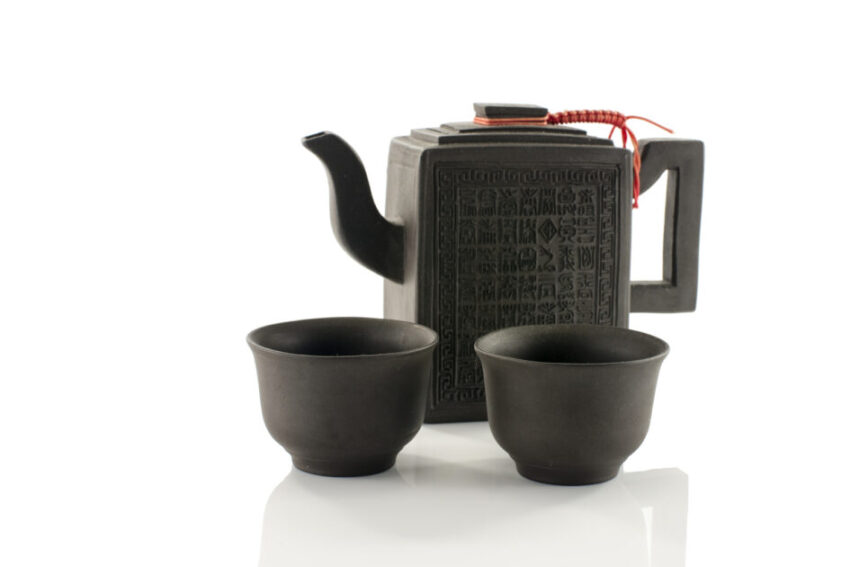
History of Tea in Japan
Japanese people have been practicing the art of tea since the 9th century. Tea masters were introduced during the 16th century, with Sen no Rikyu being one of the most famous. Tea-drinking parties were a common wealthy social gathering to show off one’s Japanese tea bowls and knowledge of tea to friends and family members.
During a tea ceremony, Japanese green tea, or matcha tea was presented in clay teacups in cylindrical shapes. Tea ceremonies were performed during meditation by monks, during political negotiations, and during the Civil War to promote calmness and serenity in stressful times.
The development of sencha, or loose-leaf tea leaves, and the senchado tea ceremony in the 18th century led to the use of smaller Japanese teapots and the introduction of porcelain cups.
Materials Used For Japanese Tea Cups
Traditional Japanese tea cups can be made from different materials, stoneware, glass, or white porcelain. Each material allows the tea drinker to enjoy tea in various ways. The characteristics of Japanese teacups are much different than the western tea cups found in the United States.
The type of clay and shape of the cup can determine the type of tea and how the tea is sipped. Raku ware is a type of Japanese pottery that was highly appreciated during early tea ceremonies for its simplicity and has been around for a long time. A famous Japanese potter, Nakazato Muan, was known for this type of ceramic.
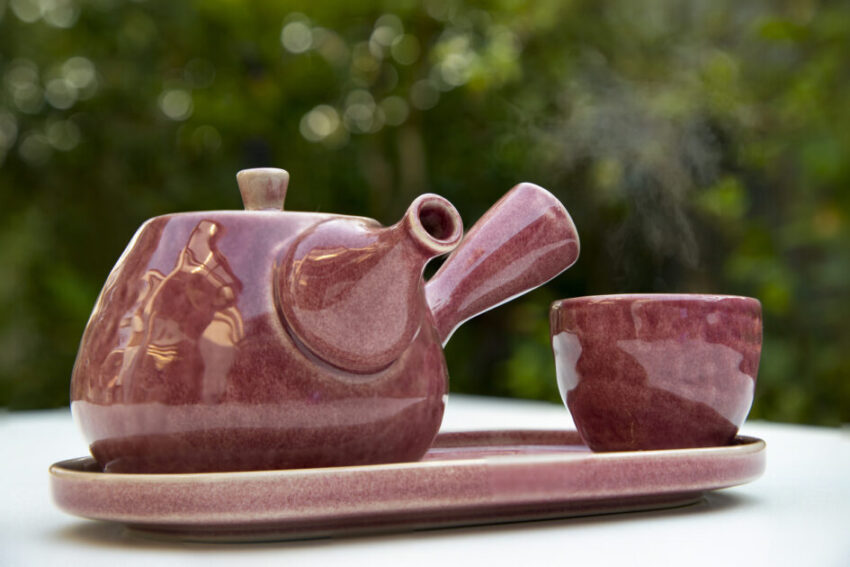
What is the Best Material For Japanese Tea Cups?
When it comes to the type of material you should use for a Japanese tea set, there are a few options to choose from. The three main materials used are porcelain, clay, and glass. Each tea variety is steeped differently to enhance its unique qualities, and each cup has different benefits. There are no specific rules for which cup to use, but it is beneficial to know about each type of cup to make an informed decision.
- Porcelain Tea Cups: Japanese porcelain teacups are very common in Japan. You will find this type of cup in most Japanese homes. These types of cups are typically used for hot tea. Porcelain cups are thin and lightweight. You can find many different styles and designs with colors and paintings. Compared to clay tea cups, they are considered more modern.
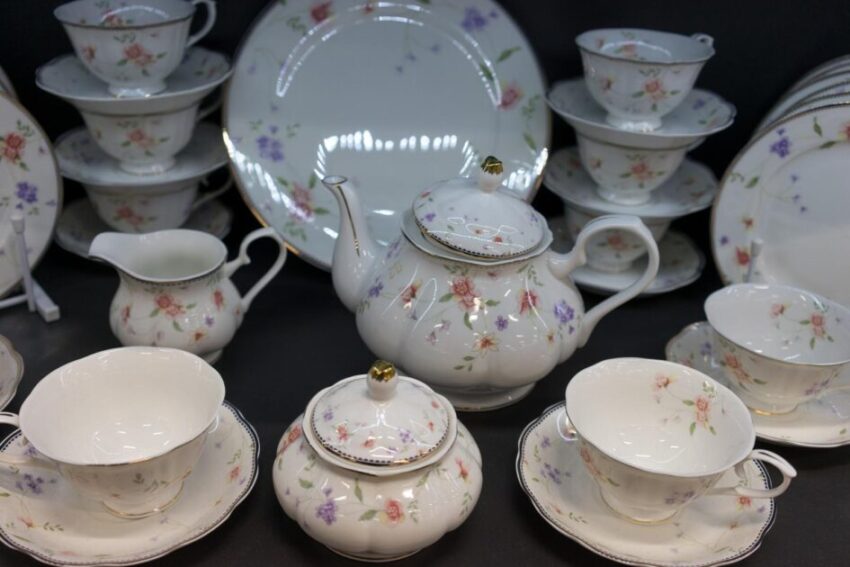
- Clay Tea Cups: These types of cups are also very popular in Japan because they offer a more traditional Japanese aesthetic. Clay was the first material used to create tea cups, offering a fire-glazed look. The Japanese phrase “wabi-sabi” is often used to describe these cups, as the meaning translates to “finding beauty and serenity in simple, imperfect objects.”
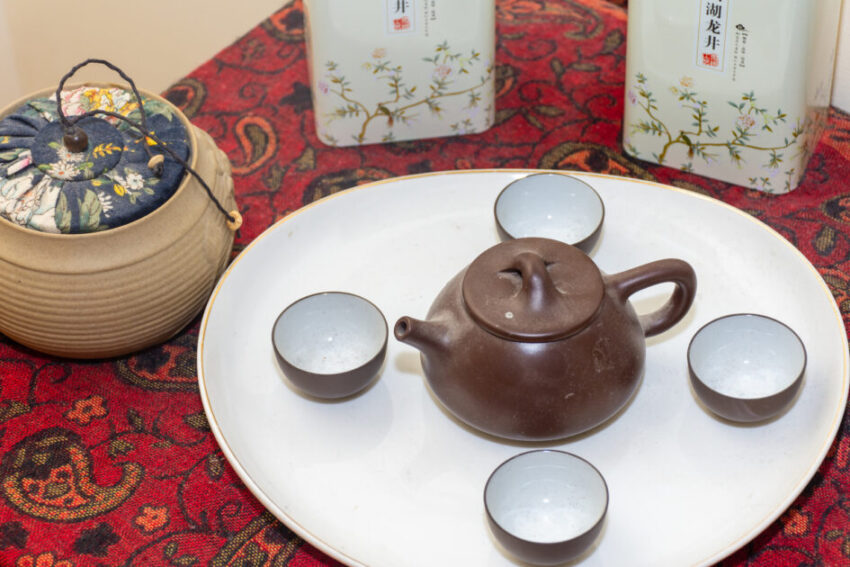
- Glass Tea Cups: Glass tea cups are primarily used during the summertime, as they are the best choice for iced or cold green tea.
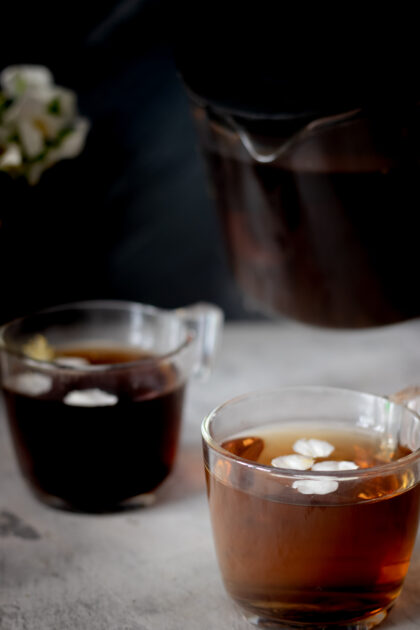
Different Types of Japanese Tea Cups
Yunomi
Yunomi is the most common type of Japanese teacup. A yunomi teacup is a tall, cylindrical cup with a turned foot. It is a good choice for drinking tea daily because the small cups are considered less formal.
Unlike Western teacups with a side handle, yunomi are handless teacups, used to feel the warmth of the tea in your hands. These are often used to drink different types of Japanese tea, such as oolong or black tea.
Yunomi is often sold as a Japanese tea set. For example, Meoto yunomi is a set of two cups usually presented as a gift for weddings to tea lovers. The larger cup is the husband’s and the smaller one is the wife’s cup. Meoto means “married couple” in Japanese.

Chawan
Chawan, or Chawan tea bowl, is a category of traditional Japanese teacups. The word “Chawan” translates to “tea bowl.” A chawan is larger than a yunomi tea cup because tea is made within the cup rather than simply poured in.
These larger matcha bowls are used for making and drinking powdered tea during a tea ceremony. Unlike small size cups, the wide bowl is the perfect size to mix matcha powder and hot water using a matcha whisk to create the best tea.
The material of a Chawan can withstand high water temperatures without burning the tea leaves, and the indentation around the lip helps to prevent the tea from spilling out when being vigorously whisked. Whisking the tea leaves creates a thicker, foamy tea.
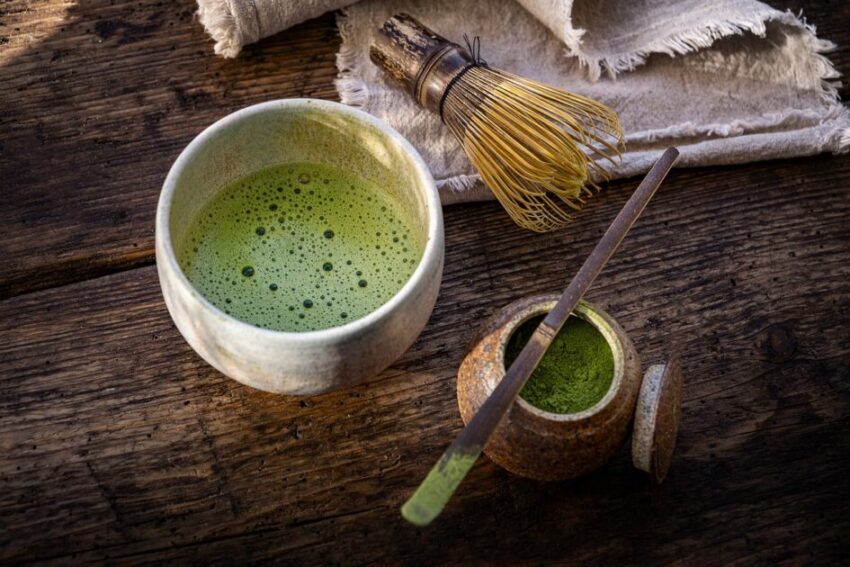
Other Items That Make Up a Japanese Tea Set
Besides traditional Japanese tea cups, there is also other Japanese tableware that goes into a full tea set. Take a look below to see the components of a complete Japanese tea set.
- Chasen: A chasen is a small bamboo wisk used for mixing matcha powder with hot water to create green tea.
- Natsume: A small, specific teacup shape with a lid made of Japanese porcelain that is used to store matcha powder. A Natsume can have many different designs.
- Chashaku: Is a bamboo tea ladle that is used to scoop the tea powder into a Chawan.
- Yokode Kyusu: A side-handle teapot. A kyusu teapot is Japan’s most iconic teapot shape and is the perfect teaware for everyday tea.
- Tetsubin: Testubin is a cast iron teapot. Different countries may use a kettle to steep tea, but a testubin is only for heating water that is then poured over tea leaves.
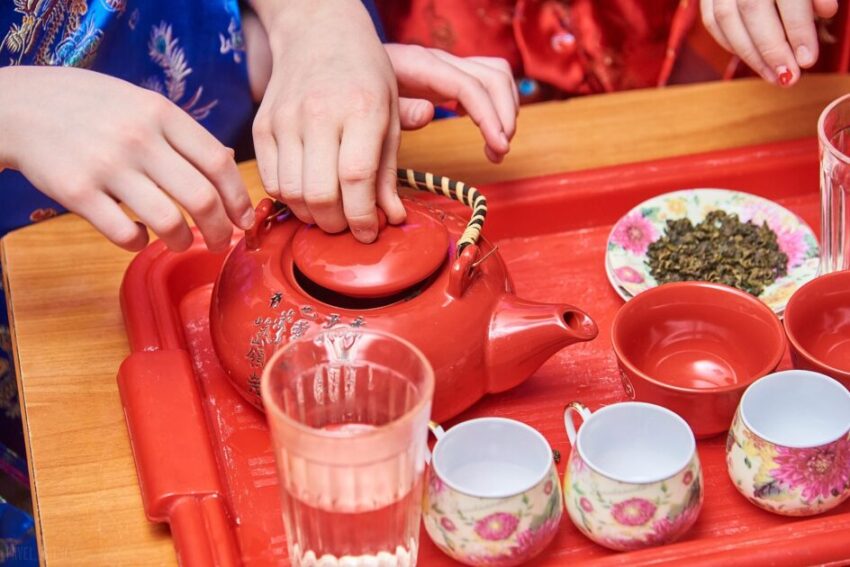
Summary
If you are an avid tea drinker, you may be interested in the various cultures in that tea drinking is valued. Specifically, the art of tea has been a staple in Japanese culture since the 9th century when it was brought over by Chinese monks who performed tea ceremonies.
Originally, these tea ceremonies were held by wealthy individuals who wanted to show off their tableware and knowledge of tea to friends and family. Throughout history, this practice grew as a way to promote peace in times of stress. Today, these tea ceremonies are performed for tourists and common people to educate and keep the tradition alive.
There are different types of Japanese tea cups used for different purposes. Chawan is a wide bowl used to mix matcha powder and water, while Yunomi teacups are smaller cylinder cups that are used for everyday tea drinking.
Sources:
https://japanobjects.com/features/teacups
https://bunkajapan.com/blogs/japanese-tea-culture/tea-cups-called
https://bunkajapan.com/blogs/japanese-tea-culture/what-is-the-japanese-tea-ceremony
